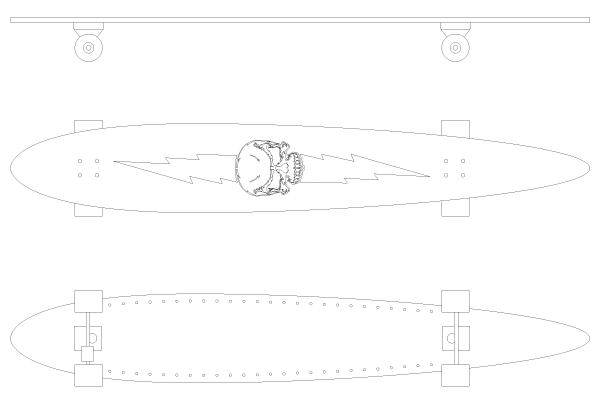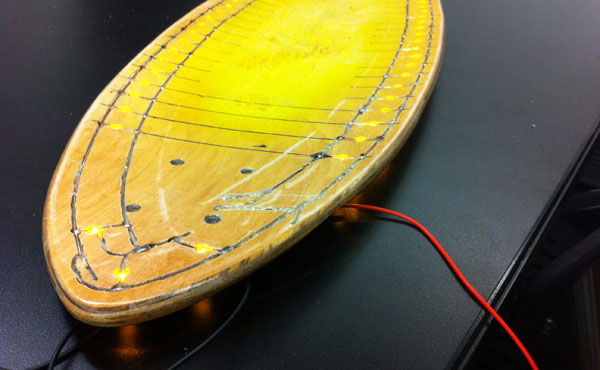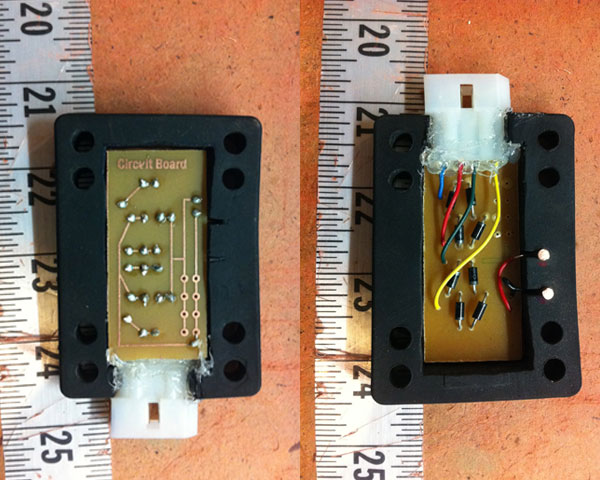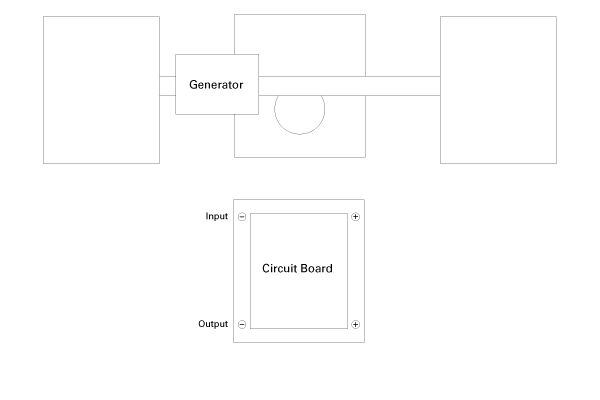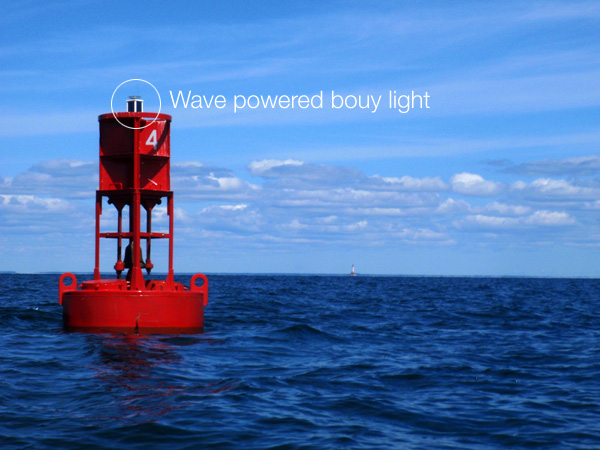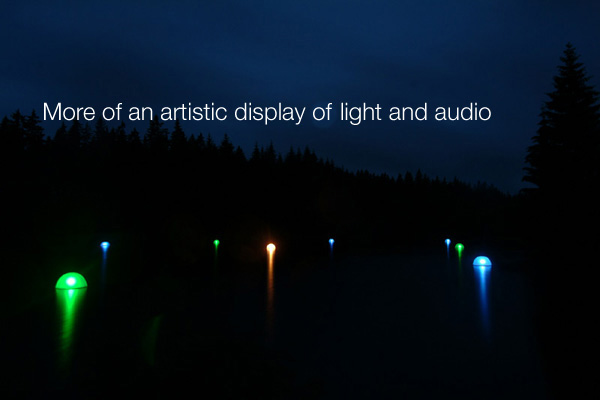The Circuit Board uses the kinetic energy from a spinning wheel to produce power, lighting undercarriage LEDs. The skateboard wheel spins a motor that outputs up to 7 volts depending on the speed of rotation. The Circuit Board can charge anything that requires electricity. The possibilities are endless.
This project was created as a midterm assignment for Jeff Feddersen’s Sustainable Energy class. The original assignment was to create something that was powered using an alternative energy source whether it was solar, tidal or kinetic. When researching ideas for this I came across a project created by Bernard Kiwia that allowed people in developing countries to use the kinetic energy created by their bicycles to charge their cellphones. I loved this concept and decided to do something similar. I chose a different vehicle, a skateboard, and a slightly different device, an iPhone.

The wiring and materials were fairly simple. A stepper motor to create the energy, 8 diodes to create a rectifier circuit, a ton of capacitors to store the energy and a hacked minty boost from adafruit to charge the phone. Once all the circuitry was put together I ran some tests using a power drill to try and get it working. I was successful in charging the iPhone during these tests but it drained all the power from the capacitors to quickly so I was really only able to charge the phone for a max of 5 seconds at a time. In theory I could charge a battery then charge the iPhone using the battery but thats kind of cheating. So I decided to go a different route for the project and just pimp out the skateboard. Rather than charging a iPhone I decided to throw some undercarriage lighting on the board and when someone is riding the board the lights are powered.


By far the most difficult part to this project was trying to figure out how to attach the stepper motor to the board. I realized that since the trucks are on an axel I couldn’t attach the motor to the deck but would have to figure out a way to attach it to the truck itself. My first attempt was just sad. I initially tried to just strap the motor to the axel using zip ties and washers, that immediately failed and I realized that I needed to figure out a way to drill through the axel and put some threaded rods through the truck to securely attach the motor. Since the trucks are made of aluminum this wasn’t as difficult as I thought it would be. I drilled two holes into the truck, attached two threaded rods to it and sandwiched the motor in with washers and nuts which sort of worked. Then I moved on to aluminum plates and compression springs to actually gauge the pressure of the motor on the wheel. Also to avoid slipping I coated the motor in plasti dip, which is used to add grip to tools.


The final step was attaching the 50 LEDs along the border of the undercarriage of the skateboard. I used copper tape to do this temporarily but plan to actually embed the LEDs and wiring into the board. This was a great project and I really am excited to continue working on it. Please feel free to email me with any questions or comments. Thanks.


